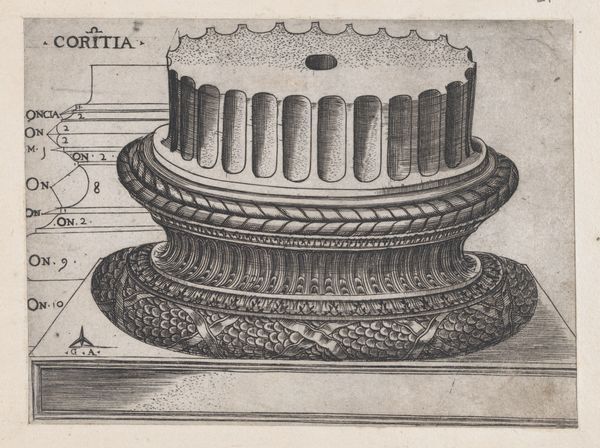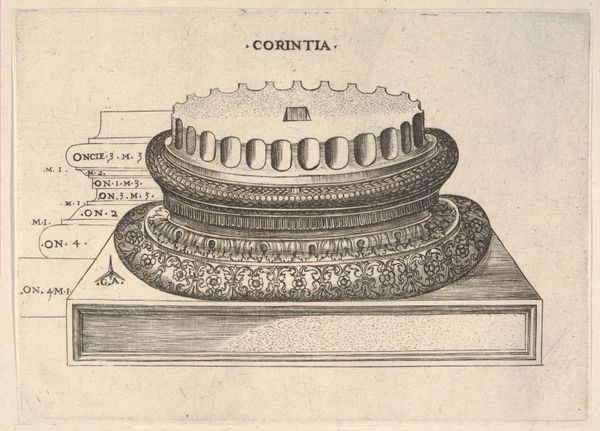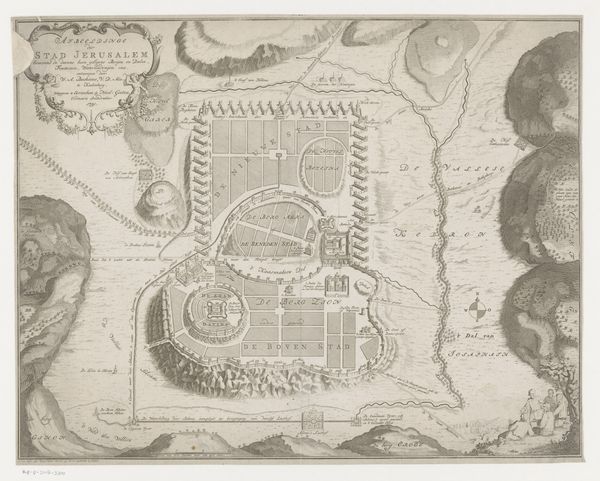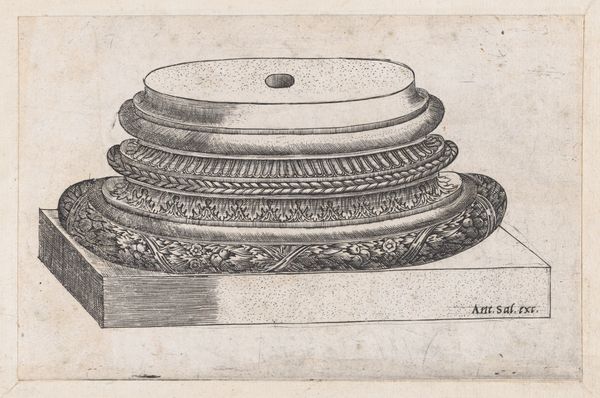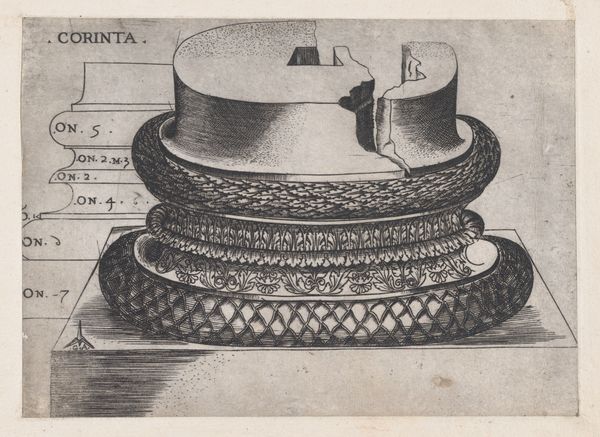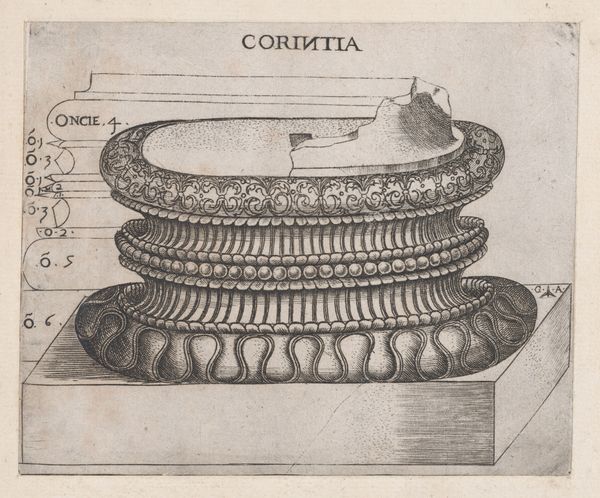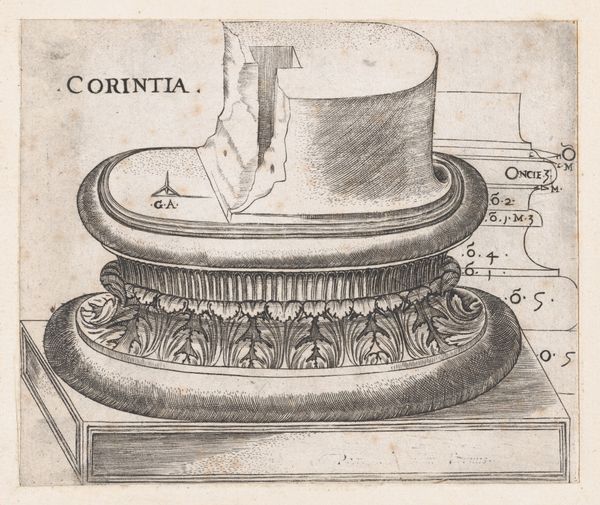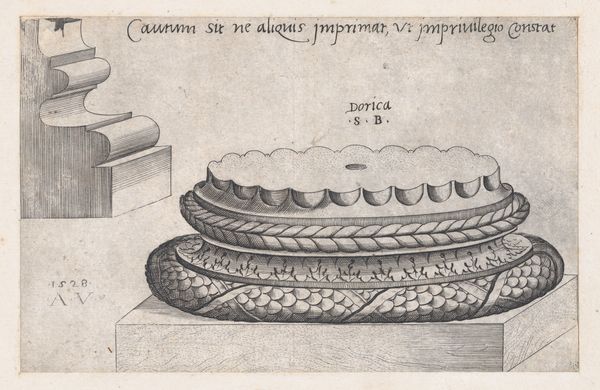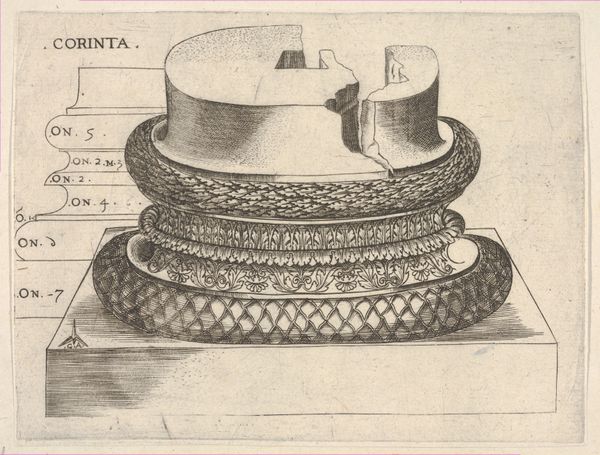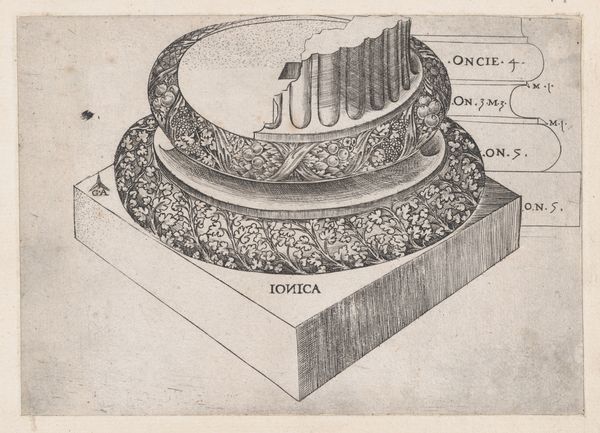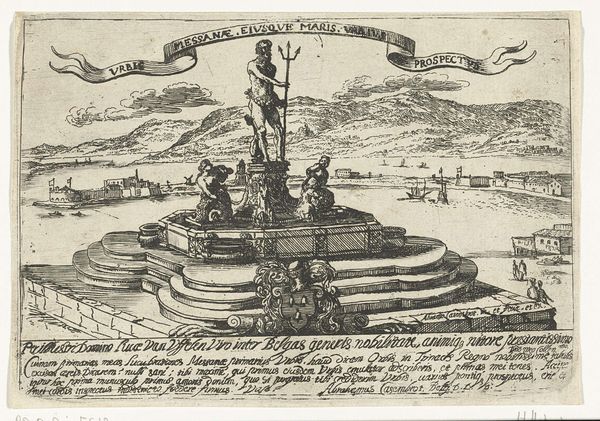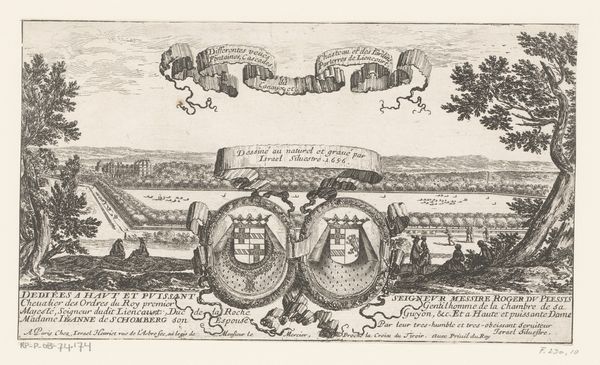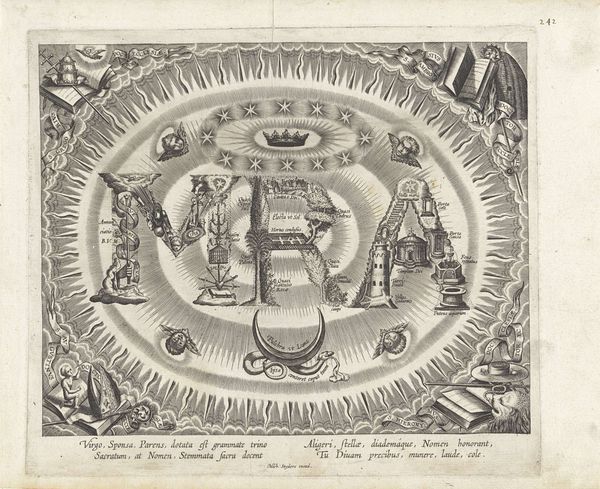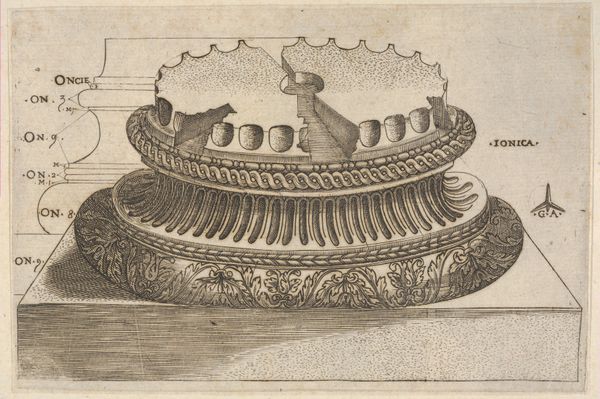
Speculum Romanae Magnificentiae: Corinthian base from the Temple of Mars Ultor, Rome 1534 - 1540
0:00
0:00
drawing, print, engraving, architecture
#
drawing
# print
#
form
#
11_renaissance
#
geometric
#
line
#
history-painting
#
engraving
#
architecture
Dimensions: mount: 8 7/16 x 8 7/16 in. (21.5 x 21.5 cm) sheet: 4 15/16 x 7 5/16 in. (12.6 x 18.5 cm)
Copyright: Public Domain
Curator: This engraving from between 1534 and 1540, part of the "Speculum Romanae Magnificentiae," captures a Corinthian base, believed to be from the Temple of Mars Ultor in Rome. It’s by Monogrammist G.A. & the Caltrop and reveals so much about the era's fascination with classical antiquity. Editor: My initial impression is one of fragmentation and precise rendering. The damage to the capital gives it a melancholic air, contrasting with the crisp lines defining the architectural elements. The sharp delineations produce stark and geometric form, calling the viewers’ eyes to dance over all of the fine details. Curator: Indeed. This print reflects a broader trend in Renaissance Europe. The "Speculum" was essentially a collection of prints aimed at disseminating knowledge of Roman architecture and design. They were sold as individual sheets and bound at the buyer’s discretion. Editor: It strikes me how the artist utilizes line to describe texture. The rounded, almost fleshy quality of the acanthus leaves is vividly created merely with variations in hatching and stroke. The stark tonal contrasts and textures are very beautiful. Curator: Absolutely. The engraving process allowed for wide circulation, making these images vital tools for architects and artists seeking inspiration from Roman forms. The Temple of Mars Ultor, dedicated by Augustus, would have held immense political and symbolic weight. To capture its form, especially during a period of renewed interest in the grandeur of Rome, demonstrates an attempt to not only revive a classic structure but to disseminate the historical and political weight such structures represented. Editor: And this print presents it so clearly and deliberately. The dimensions noted along the side aren't just documentation. The addition of notes gives the architectural form itself an academic edge, highlighting the inherent geometry. The way that knowledge has been captured here through geometrical reproduction of natural and designed forms is absolutely a product of its time. Curator: In a way, the print itself becomes a symbol. It showcases both the glories of the past, and a new kind of visual, social, and intellectual history available thanks to mass production. Editor: Yes, in that intersection, between geometry and its dissemination is the heart of its appeal. I leave with a real sense of structure meeting story through line.
Comments
No comments
Be the first to comment and join the conversation on the ultimate creative platform.
